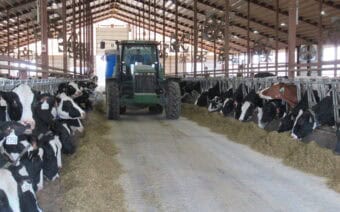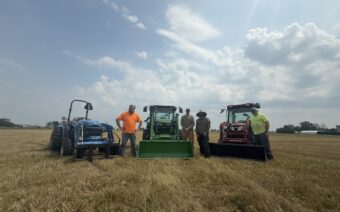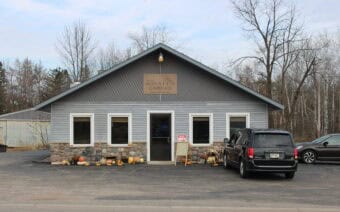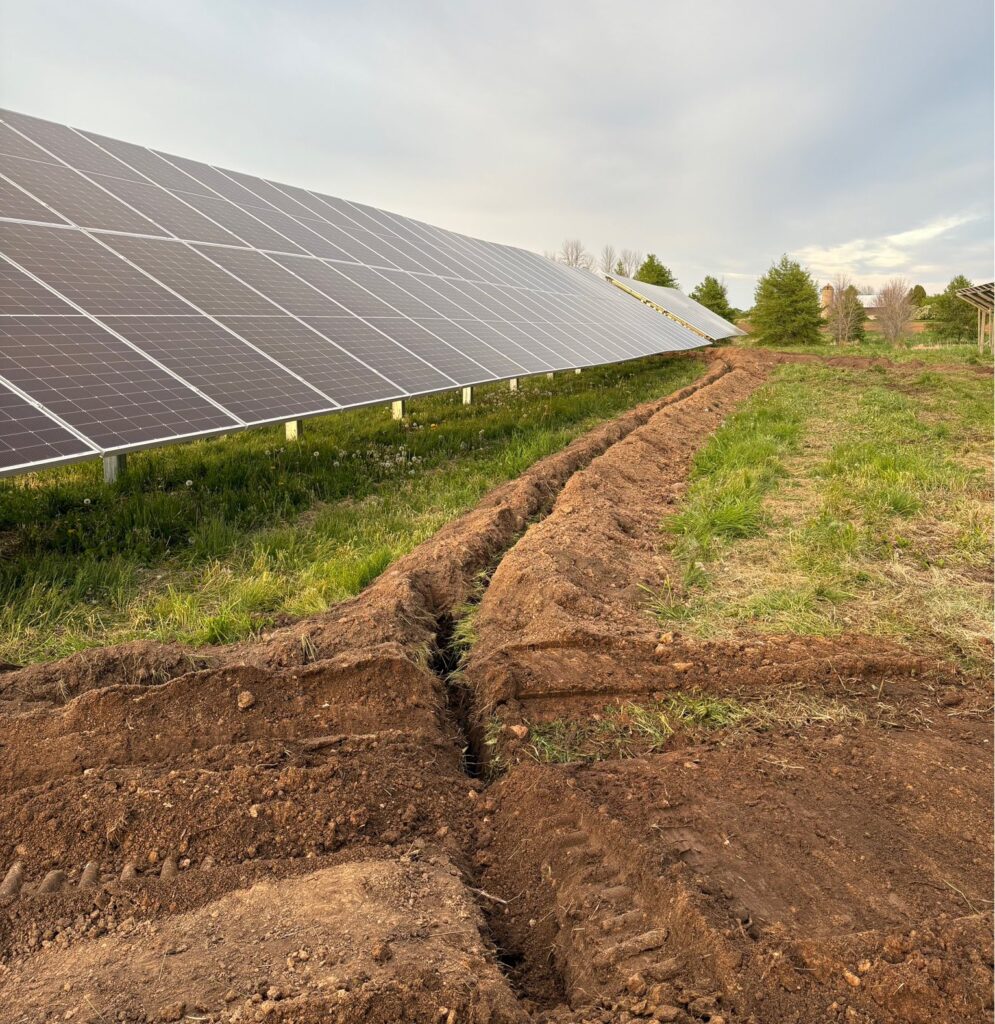
October 20, 2025
STURGEON BAY – Richard “Rich” Olson said that utilizing technology to improve efficiencies has long been a best practice at the Olson Family Farm.
In fact, the Olsons have been pioneers in adopting innovative agricultural technologies over the years.
Most recently, Rich said the family-owned, fifth-generation, 150-plus-year-old farm ventured into using solar to provide electricity to its farming operation, primarily their barn, where they house 60 registered Holsteins they milk.
Rich said solar conversion on the farm – which he co-owns with his wife, Shelly, and his brother, Eric, and his wife, Julaine – has been in the back of his mind for a while.
He said the idea moved from the back to the forefront when someone approached him with a question about solar energy.
“Somebody once asked me why we weren’t using solar, and I really couldn’t answer his question,” he said. “That awakened us to the possibility that this really was something we could benefit from.”
An idea becomes reality
Rich said they began discussing solar options with Olson Solar Energy (no relation) in April 2024.
The initial proposal they received, he said, involved installing solar panels on the roof of their barn.
“But as we thought more about that, we didn’t really like the idea of having that much weight on the roof,” he said. “We also didn’t like the idea of the panels catching snow and adding even more weight. And if we had to clean snow off the panels, we’d have to figure out how to get up there to do that.”
So, Rich said they “switched gears a little bit” and pivoted to a ground-mount installation, utilizing a small section of non-productive land that was still part of the farmstead.
“It was close to our electrical panel where Wisconsin Public Service (WPS) has their entrance [to the property],” he said. “So, we put the panels close to that so that it was very easy to run the lines back to it.”
Rich said another factor they hadn’t initially considered was the orientation of the barn roof – making the switch to a ground-mount unit an even better option.
Installing panels there, he said, would have meant an east-west layout, with only half the system receiving morning sun and the other half catching afternoon sun.
“It would have taken about 20% more solar panels to do it that way, as opposed to facing them all south where they have full-time sun all day,” he said. “So, we were able to save a lot of cost in solar panels. It would have taken 283 solar panels in the original configuration, and our final project was 238 solar panels.”
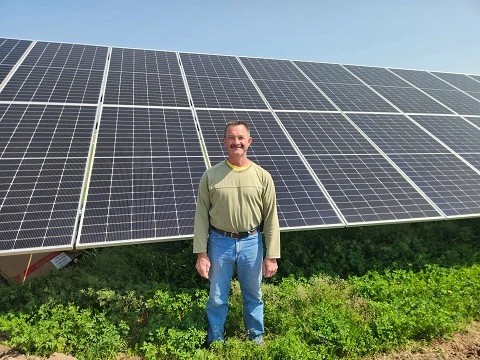
Construction on the array, Rich said, started in May and wrapped up in mid-July, when the farm’s electric bills tend to be at their highest.
They have, for all intents and purposes, he said, been off the grid since then – generating 98% of their electricity needs and selling any excess power back to the grid.
Just six days into their next billing cycle, Rich said WPS was charging them $373 for electricity.
The final bill for that month, he said, was slightly less at $363.
“Our bill for the second full month of electricity was just $93,” he said.
But, Rich said though the solar panels help reduce expenses, their impact extends much further.
“By producing our own energy, that’s just one more piece of how we can be better stewards of the land that we’re given to use,” he said. “And using solar is, to us, just making good use of available resources. The sun shines for free, and if we can save on our electrical bill with an investment in equipment, why not do it? I would encourage others to consider it as well.”
A long string of technological advancements
Even before embracing modern technology, Rich said the family has long been seen as pioneers – dating back to when they first introduced rubber-tired tractors on their farm.
Then, in the early 1980s, he said they became one of the first farms in the Door County area to have a four-wheel drive tractor.
Rich said people came from miles around to see the new things they were trying and see if they worked.
However, he said the most significant technological leap came with improvements to their milking operation.
“At one time we were milking 100 cows, but 12 years ago – in December 2013 – we put in one of the first milking robots in northeastern Wisconsin,” he said. “Sixty cows is the capacity of one milking robot, so we downsized our herd to 60. That was probably our biggest jump into technology at the time.”
Since then, Rich said they’ve added GPS guidance to their tractors for planting and tillage, which has been a game-changer.
“It’s wonderful,” he said. “Sometimes, we get on a tractor and wonder why we don’t have it on all the tractors, but there are just some jobs on the farm that don’t require it.”
Together, Rich said these improvements have made their lives easier and given them more “downtime” with the family.
“The robots alone have added years onto our lives – especially quality years, because every older farmer I know has either a bad shoulder, bad knees, bad hips or a bad back from milking cows and going through that strenuous work all those years,” he said. “Hopefully, we [switched to the robots] early enough in life where our bodies will last longer, and we’ll be able to enjoy our retirement when that day comes.”
Rich said a large part of their animal care is driven by technology as well.
The milking robot, he said, provides extensive data during milking, including detailed information about milk quality.
The cows’ special collars, Rich said, further contribute valuable data.
“The collars actually count their footsteps throughout the day,” he said. “It’s like a FitBit for cows. Every cow has its own ‘normal’ [amount of footsteps to achieve each day], and if she’s below what is normal for her, the computer gives us a notification to go and check on her and try to determine if she’s not feeling good or if she’s got a sore foot, or whatever.”
Rich said the collar also monitors the cow’s rumination, tracking the number of minutes she spends eating and chewing each day.
“So, if the cow’s normal baseline is a certain level, and she’s below that level, we get a notification to go and check on her,” he said. “The collars are measuring all these things for us 24 hours a day, so, in practicality, we’re maybe only with the cows four hours a day.”
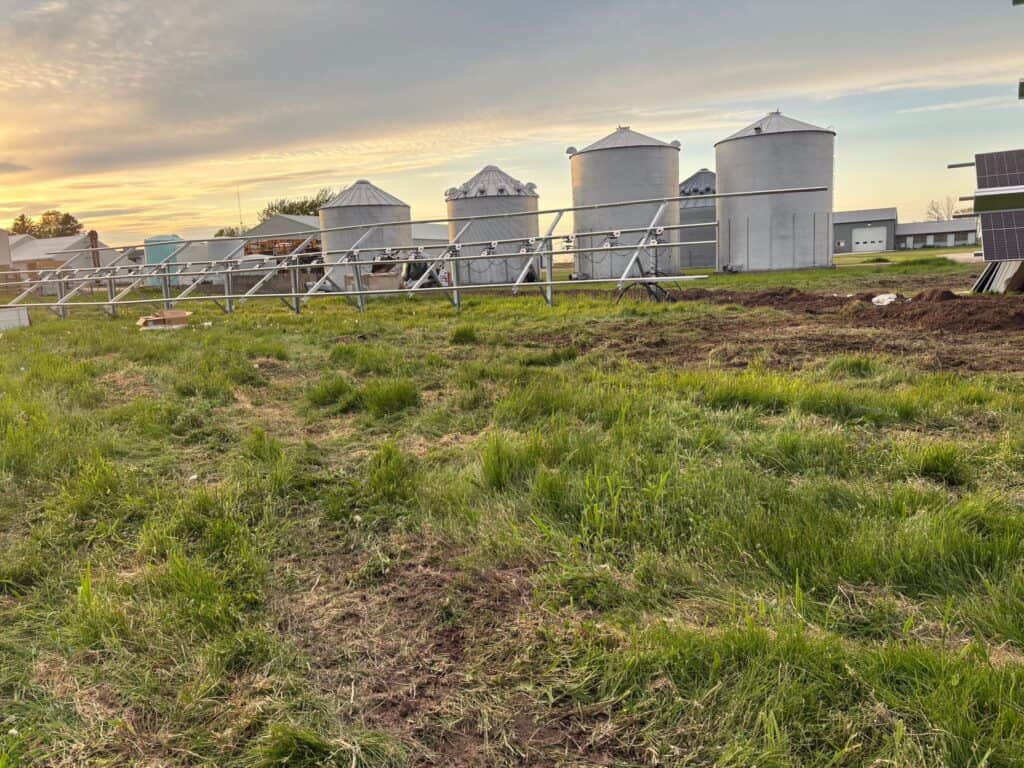
Thanks to the collars monitoring and transmitting data around the clock, Rich said they receive valuable insights that help them make informed management decisions and maintain herd health.
“Healthy cows produce more milk, and more milk means better profitability for us,” he said. “But the information and technology are only good if you use them.”
As for the rest of their animal care, Rich said they use a lot of well-proven practices.
“We feed colostrum to our baby calves, and we have a very thorough vaccination program to prevent them from getting sick,” he said. “Anytime we can prevent sickness, we would much rather do that than have to treat sickness.”
Rich said the cows at Olson Family Farm are fed a diet of corn silage, ground corn, hay and haylage.
He said they also purchase soybeans, soybean meal and a complete blend of vitamins and minerals to ensure the cows receive a balanced and nutritious diet.
“We probably feed the cows more nutritionally correct meals than we eat ourselves,” he laughed. “We have a separate calf barn and have very nice facilities for our animals to keep them happy, healthy and very productive. And we do whatever we can to make our job as easy as possible to care for them and to do the very best we can every day.”
Give and take
Though the Olson family has always been willing to try new things – a trait they inherited from their dad, who passed away in 2006 and “always liked trying new things” – Rich acknowledged that not every venture has been a success.
“We had emus for a period of time, because he thought that was something we should get into,” he said. “We wanted to produce chicks for other people to buy. Well, we ended up being one year too late – the market kind of fell out.”
Rich said they ended up raising them for six or seven years and processing them for their meat.
And though the initial plan didn’t yield the expected results, Rich said a secondary one did.
“We did have good success with the emu oil, because it is a natural anti-inflammatory product that the Aborigines in Australia have known for thousands of years,” he said. “They used it for any healing of the joints or skin. It’s also very soothing for sunburns or mosquito bites. It’s the best thing you can put on something to get rid of inflammation. So, we kind of fell into the emu oil business for a period of time.”
Though they haven’t raised emus for quite some time, Rich said those setbacks haven’t – and won’t – deter the family from exploring new opportunities that could enhance their lives and boost efficiency.
“Not everything you try is successful,” he said. “But, unless you try something, you’ll never know. I think our father would be very proud of [our conversion to solar] – he’d be glowing, in fact. He always wanted to try new things and wasn’t afraid to take a calculated risk.”
More technology doesn’t replace hard work
Though technology can eliminate some work, Rich said it doesn’t mean farmers are working any fewer hours.
They’re still working just as hard and just as long, he said, just in different ways.
“When my great-great-grandfather, Mathias, immigrated here from Norway, they only had the benefit of their hands and horses to do the hard work – including building a home and barn and clearing land,” he said.
Rich said his great-great-grandfather came to the U.S. in 1868 and purchased 80 acres – two 40-acre parcels – which is still part of what the family farms today.
“He was from a farming family in Norway,” he said. “But over there, the oldest son always got to have the farm handed down to him, and he was not the oldest son. So, he had to find his own way.”
Rich said his great-great-grandfather saw potential for prosperity by coming to America, “so they sold off everything they had and made the 30-day boat trip from Norway.”
“They landed in Canada and then came to the U.S. through the Port of Detroit,” he said. “They then made their way to Wisconsin across Michigan and eventually ended up where we are located today.”
Rich said the farmstead was originally a cash crop operation, but became a dairy farm about four years later.
Today, he said the Olson Family Farm consists of 1,150 acres, on which they grow corn, wheat, oats and alfalfa.
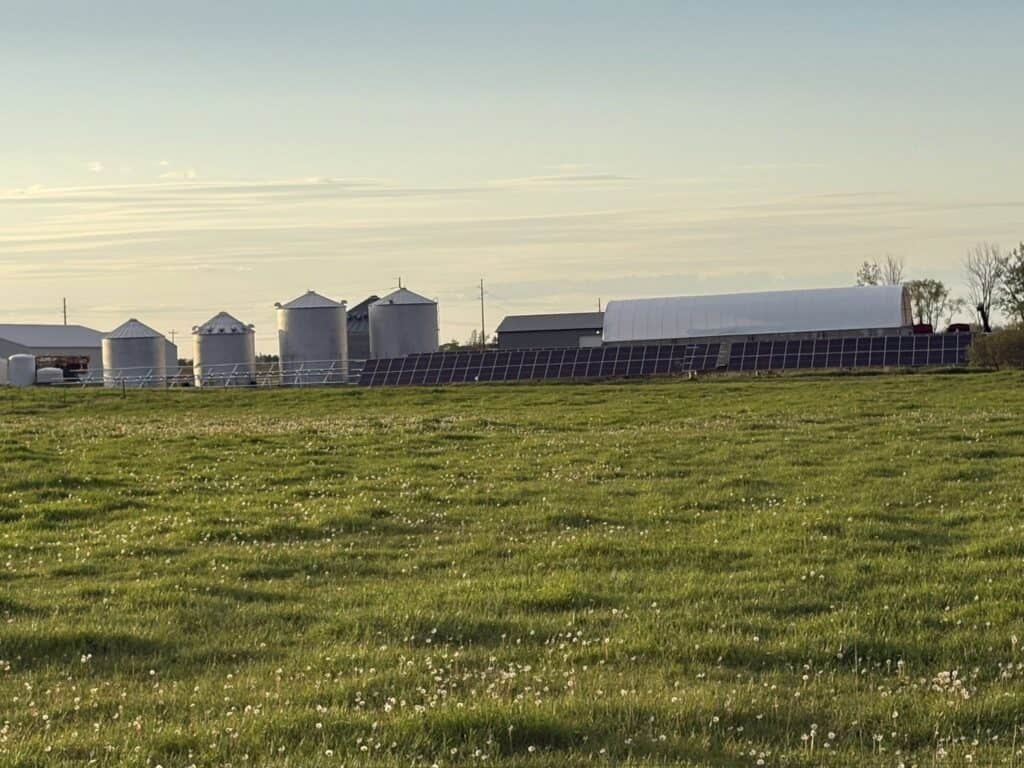
Conservation at the forefront of operation
Besides helping run the farm, Rich said his brother, Eric, is very involved with Peninsula Pride Farms – a group of conservation-minded farmers and other business people who work to improve water quality and soil health and use better farming practices through conservation.
“We’ve adapted a lot of those practices in the last five years by planting cover crops, doing no-till planting, doing intra-seeding where we plant in between the rows of our corn with clovers and grasses,” he said. “When the corn is harvested, those crops take over, and there are still live roots growing in the soil to take up nutrients.”
Rich said soil conservation and soil health are a big piece of what Olson Family Farm is always working toward.
“We only get one earth, so everything we can do every day to try and make the soil better and make better use of what we’re given to use is what’s best for the environment,” he said.
Head to Olson Family Farm’s Facebook page for more.
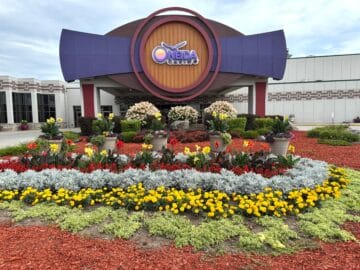 From one ‘green thumb’ to another, The Plant People under new ownership
From one ‘green thumb’ to another, The Plant People under new ownership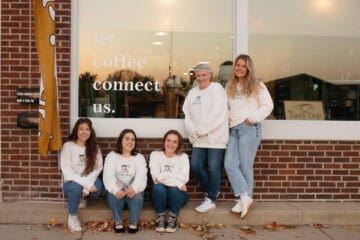 Shawano coffeehouse changes hands with former employee becoming owner
Shawano coffeehouse changes hands with former employee becoming owner




